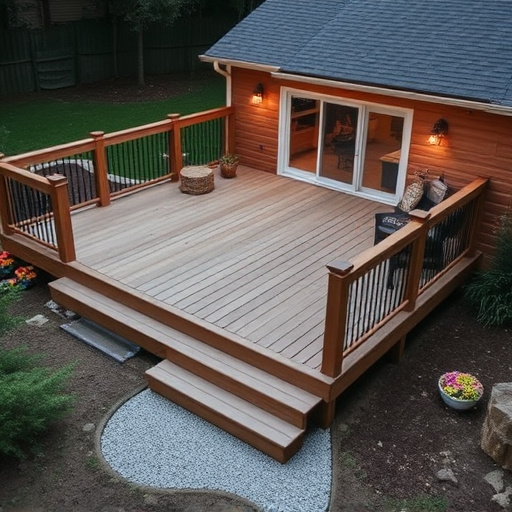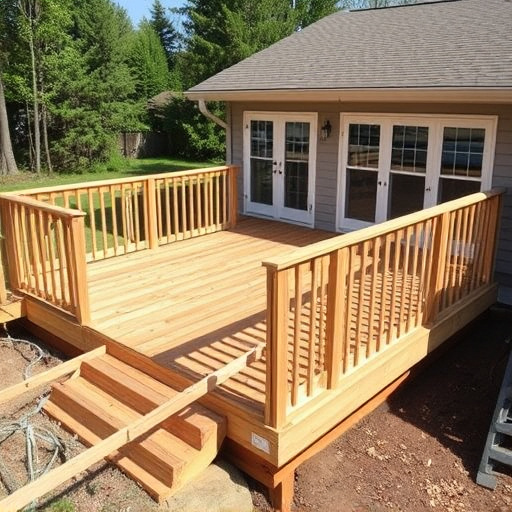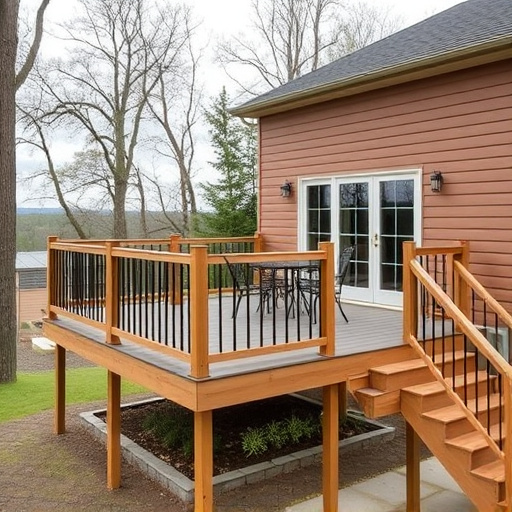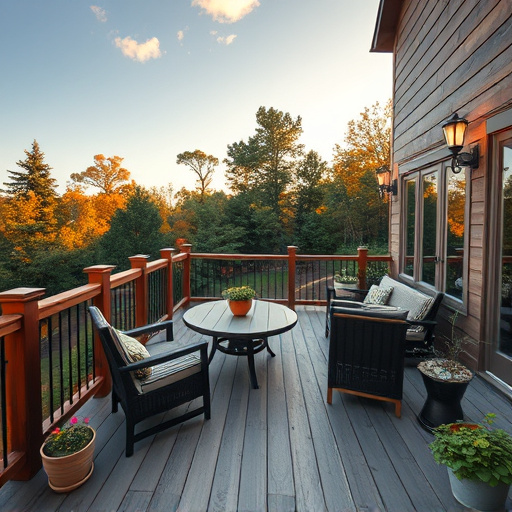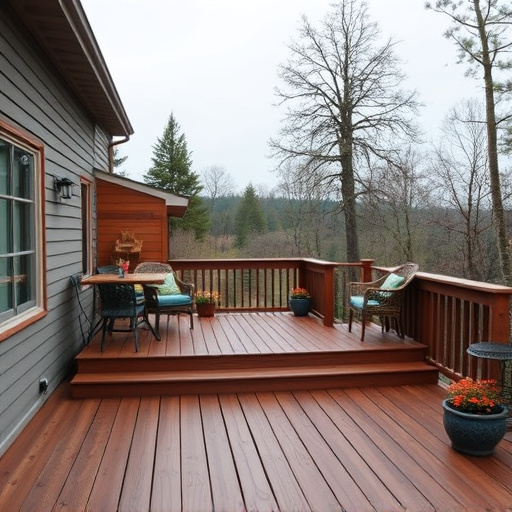TL;DR: Before starting deck framing calculations, accurately measure your deck's length and width (considering irregular shapes) to determine lumber needs for beams, joists, and stringers. Assess the deck layout, including levels, railings, and design, to select suitable connectors, fasteners, and hardware. Proper measurement ensures efficient planning, correct material selection, avoids over-purchasing or shortages, and aligns with local building codes for a durable and secure deck structure.
Calculating the right amount of materials for your deck framing is a crucial step in any DIY project. This guide will walk you through the process, ensuring a sturdy and safe structure. First, assess your deck’s size and layout by measuring the area and determining the required number of framing members. Next, understand different framing types like post-and-beam or stringer systems, as each has unique material requirements for beams, posts, and joists. Finally, don’t forget to factor in additional materials such as fasteners, connectors, trim, and safety equipment needed for a successful deck framing project.
- Assess Deck Size and Layout
- – Measuring the deck area
- – Determining the number of framing members required
Assess Deck Size and Layout
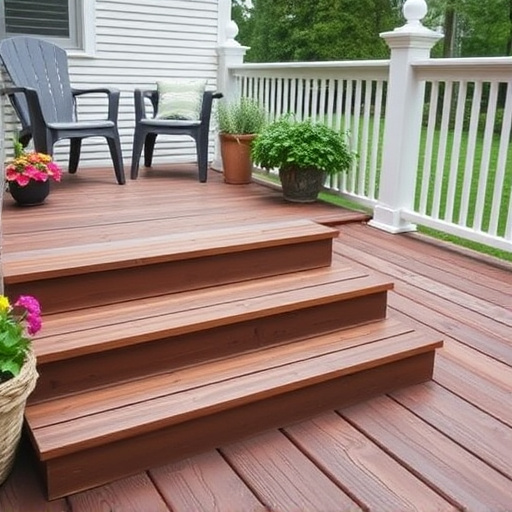
Before calculating the materials needed for deck framing, it’s crucial to assess your deck’s size and layout. Start by measuring the length and width of the deck area, making sure to account for any unique shapes or features. This information will determine the amount of lumber required for the frame, including beams, joists, and stringers. Once you have these measurements, you can create a detailed plan that includes all the necessary components.
Understanding your deck’s layout is equally important. Consider factors like the number of levels, any additional structures such as railings or ladders, and the overall design. These elements influence the type and quantity of connectors, fasteners, and other hardware needed for assembly. By carefully evaluating these aspects, you can ensure that your deck framing project aligns with your vision and requires the appropriate home exterior services, including roofing and siding or residential siding options.
– Measuring the deck area
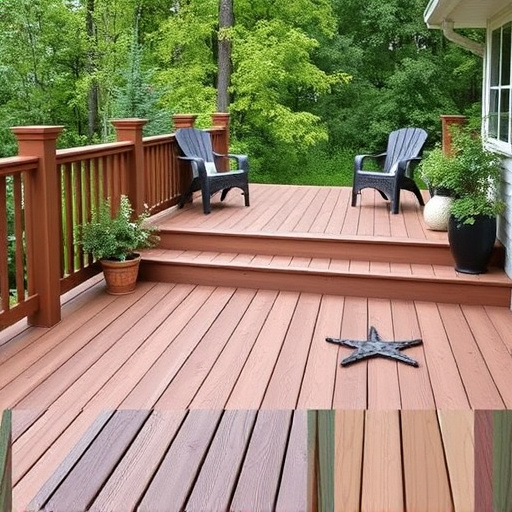
Measuring your deck’s area is a crucial first step in calculating the materials required for deck framing. Start by defining the boundaries of your deck, ensuring you capture the length and width accurately. Use measuring tools like tape measures or laser distance meters to obtain precise dimensions. Once you have determined the total area, consider any unique features such as corners, curves, or raised sections that might require additional material.
Accurately assessing the space will enable you to select the appropriate amount of materials, including joists, beams, and decking boards. This process is essential for efficient planning and budgeting for your deck framing project, ensuring you avoid over-purchasing or running short on supplies. Remember, a well-planned deck framing project begins with meticulous measurement.
– Determining the number of framing members required
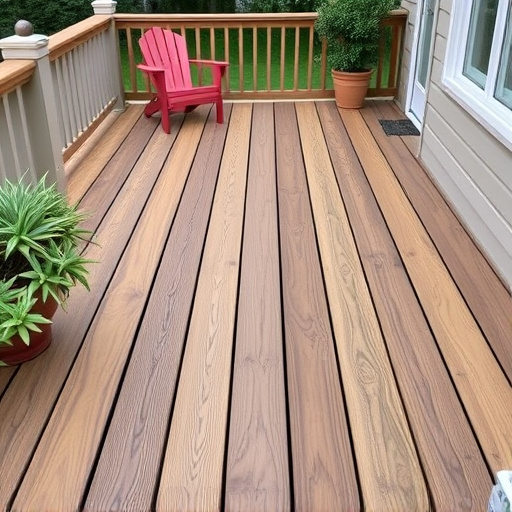
Calculating the amount of framing members needed is a crucial step in any deck framing project. The first step is to measure the deck’s length and width, which will determine the overall size and footprint of your deck. Once you have these measurements, you can calculate the number of joists required based on industry standards and building codes. Typically, joists are spaced 16 or 24 inches apart, depending on the span and load requirements.
Additionally, you’ll need to consider post-and-beam connections for support. The placement of these structural elements should align with your deck’s design and the local building code. Home exterior services professionals often recommend using high-quality materials for roofing solutions, ensuring both the durability and safety of your deck framing. By accurately determining the number of framing members needed, you can avoid unnecessary material waste and ensure a solid, stable deck structure.
Calculating the materials needed for deck framing is a straightforward process once you’ve assessed your deck’s size and layout. By accurately measuring the area and determining the required number of framing members, you can efficiently plan and procure the perfect amount of materials for your decking project. Remember to factor in any specific design elements or structural requirements to ensure a sturdy and durable deck framing system. Happy building!








